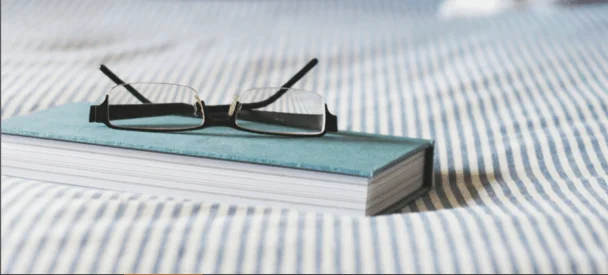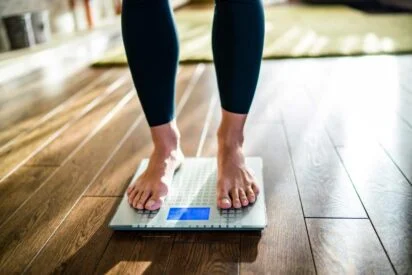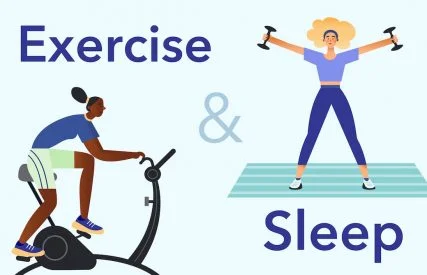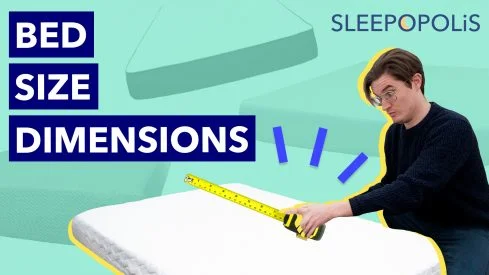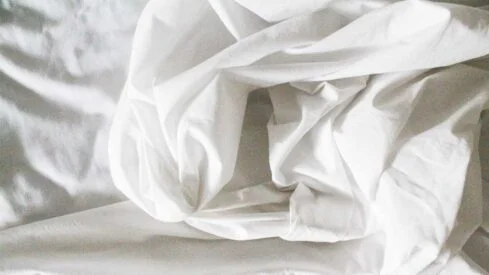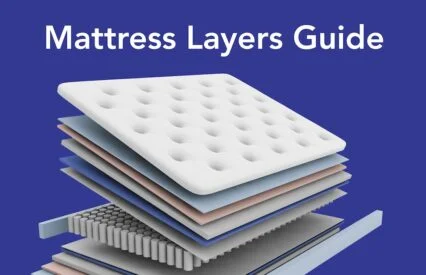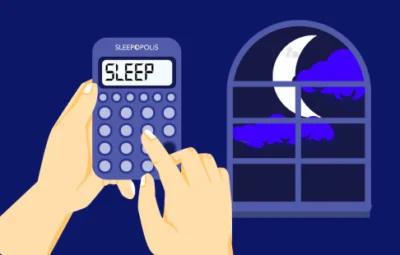If you’re here, you’re likely deciding whether you want to purchase the Tuft & Needle or Purple mattress. I understand — these beds are both made by well-respected brands and have excellent customer reviews that speak to their pressure-relieving qualities. However, there are some key differences that set them apart.
In this comparison, I’ll break down these beds and go into detail about their similarities and differences. I’ll discuss their firmness, how they feel, and how they’re constructed. I’ll then jump into their performance results for tests like cooling, edge support, pressure relief, and more. Finally, we’ll talk about price and company policies.
Short on time? Skip down to my review summary.
Tuft & Needle vs Purple
Product
Firmness
Score
Tuft & Needle vs. Purple Mattress Overview
Here’s a brief overview of the strong points of the Tuft & Needle and Purple, as well as which type of sleepers they’re best suited for.
| Tuft & Needle is best for… | Purple is best for… |
| Back sleepers | Hot sleepers |
| Couples | Combination sleepers |
| Budget shoppers | People with joint pain |
Tuft & Needle vs Purple Video Review
Looking for a quick summary of each mattress and who I recommend them for? Check out my Tuft & Needle vs. Purple video review below.
Nectar vs. Purple: Top Similarities
- Company policies: Both mattresses come with free shipping, a 100-night sleep trial, and a 10-year warranty.
- Base material: The main support system in both beds is a tall layer of high-density foam.
- Pressure relief: Both mattresses help relieve pressure, especially in the lower back.
Nectar vs. Purple: Top Differences
- Firmness: The Tuft & Needle is softer than the Purple mattress.
- Construction: The Tuft & Needle is an all-foam bed, while the Purple combines foam with a polymer grid.
- Price: The Tuft & Needle is the cheaper option of the two.
Tuft & Needle vs. Purple: Construction & Feel Differences
Now that you know the main similarities and differences between these beds, let’s dive a little deeper into how these mattresses actually feel. I’ve tested these mattresses in the Sleepopolis studio for different feel factors, such as firmness, pressure relief, bounce, and sinkage.
What’s the Firmness Difference?
Identifying firmness can be a bit subjective – it all depends on the sleeper’s sleeping position, body type, and weight. That’s why I always test mattress firmness with several colleagues, all of whom are Certified Sleep Science Coaches. We rate firmness on a scale of 1 to 10, with 1 being the softest and 10 being the firmest. My colleagues and I individually scored each bed and then averaged our scores to create the final firmness rating.
The Tuft & Needle falls at a 6 out of 10 on our mattress firmness scale. Our industry standard for a true medium-firm mattress is a 6.5, so the Tuft & Needle is a medium-firm bed that leans slightly softer. The Purple falls at a 7 out of 10 on our firmness scale, making it a medium-firm bed that leans slightly firmer.


What Does Each Mattress Feel Like?
Now let’s discuss what it feels like to lie on them.
When I laid down on the Tuft & Needle, I thought it had a classic all-foam feel. I felt some nice initial plushness and pressure relief from the top layer of foam as it eased my body onto the support foam below. This bed has a simple design, with just two layers of thick foam. However, I still felt a lot of lift and support from this mattress. I really enjoyed the medium-soft foams that contoured around my sensitive joints. I felt most comfortable sleeping on my back, as the foam molded to the space in my lower back and offered some pressure relief. The bed overall had a super-cozy and soft feel.
The Purple has a unique feel due to its Hyper-Elastic Polymer grid design. This support system is pretty flexible and bouncy, so I found it super-easy to move around and switch sleeping positions, which makes it a good option for combination sleepers. The Purple definitely felt firmer than the Tuft & Needle, and I found it slightly more supportive. I felt most comfortable when sleeping on my back and stomach on it — I could feel the mattress lifting my hips in line with my shoulders, helping to promote a comfortable, neutral spinal alignment. I didn’t feel a ton of contouring or pressure relief around my hips and shoulders when side sleeping, so side sleepers might want a softer bed.
How Does the Construction Differ?
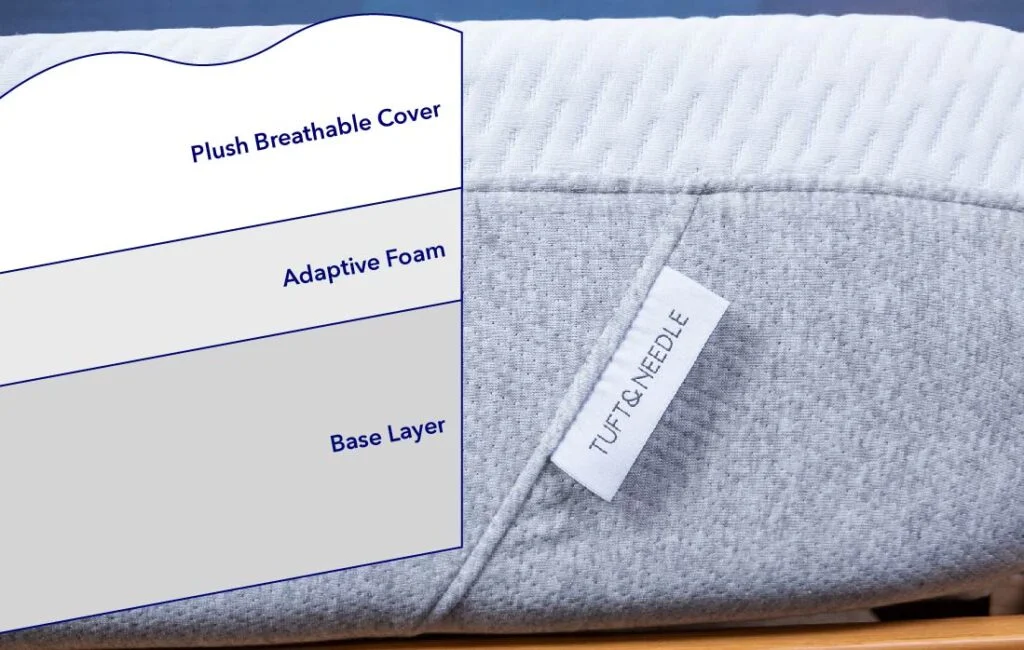
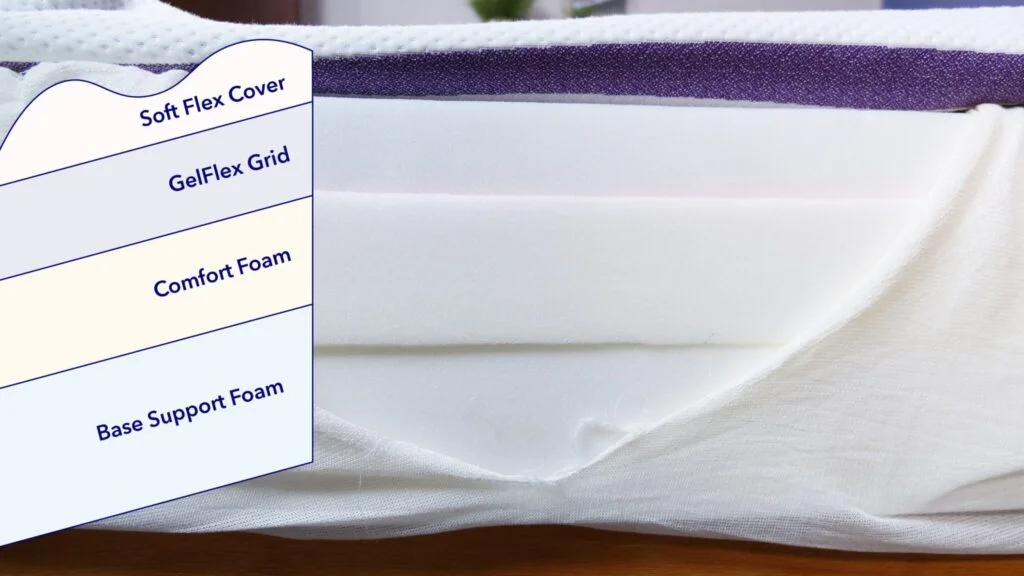
Tuft & Needle vs. Purple per Body Type
A mattress’s feel can change based on your preferred sleeping position and body type. Below, I’ll break down how the Tuft & Needle and Purple mattresses might perform for a variety of sleepers.
Tuft & Needle
| Body Weight | Side | Back | Stomach |
|---|---|---|---|
| Light (under 130 lbs) | unpleasant | excellent | excellent |
| Average (130-230 lbs) | good | excellent | unpleasant |
| Heavy (over 230 lbs) | unpleasant | unpleasant | unpleasant |
| Body Weight: Light (under 130 lbs) | |
|---|---|
| Side Sleeper | unpleasant |
| Back Sleeper | excellent |
| Stomach Sleeper | excellent |
| Body Weight: Average (130-230 lbs) | |
| Side Sleeper | good |
| Back Sleeper | excellent |
| Stomach Sleeper | unpleasant |
| Body Weight: Heavy (over 230 lbs) | |
| Side Sleeper | unpleasant |
| Back Sleeper | unpleasant |
| Stomach Sleeper | unpleasant |
Purple
| Body Weight | Side | Back | Stomach |
|---|---|---|---|
| Light (under 130 lbs) | good | good | good |
| Average (130-230 lbs) | unpleasant | good | unpleasant |
| Heavy (over 230 lbs) | unpleasant | unpleasant | unpleasant |
| Body Weight: Light (under 130 lbs) | |
|---|---|
| Side Sleeper | good |
| Back Sleeper | good |
| Stomach Sleeper | good |
| Body Weight: Average (130-230 lbs) | |
| Side Sleeper | unpleasant |
| Back Sleeper | good |
| Stomach Sleeper | unpleasant |
| Body Weight: Heavy (over 230 lbs) | |
| Side Sleeper | unpleasant |
| Back Sleeper | unpleasant |
| Stomach Sleeper | unpleasant |
Tuft & Needle vs. Purple Comparing Mattress Performance
I run a series of tests on every mattress I review to determine its performance in categories like cooling, motion isolation, pressure relief, and more. Below, I’ll break down these tests and how the Tuft & Needle and Purple mattresses performed.
Temperature
When I evaluate cooling in a mattress, I first take a look at its materials and construction. Typically, all-foam mattresses have a reputation for trapping heat, so I had low expectations for the Tuft & Needle. However, this bed contains a foam layer infused with gel and graphite. These are two great cooling infusions that help draw heat away from the body.
I next test the bed using a thermal gun. I first record the initial temperature of the mattress, and then lie on the bed for five minutes before taking the bed’s temperature again. When I performed this test on the Tuft & Needle, the bed only warmed up by 6 degrees, which indicates good cooling. I think this bed could be a good choice for hot sleepers —though those who are extra prone to overheating might prefer a bed with materials that promote airflow, such as innerspring coils.
When testing the Purple mattress for cooling, I had high expectations due to the structure of the polymer grid inside. This grid provides plenty of room for air to flow in and out of the bed without becoming trapped. Although the Purple didn’t feel cool-to-the-touch, I found it to be very breathable when I rested on it. When I performed the thermal gun test on the Purple, I found a temperature increase of 4.8 degrees after lying on it for five minutes. This indicates excellent cooling abilities, so I would recommend this bed to any sleeper who overheats easily.
Based on the materials, construction, and thermal gun results of these beds, I’d say the Purple mattress is the better choice overall when it comes to cooling.
Motion Isolation
If you share your bed with a partner, pet, or wild toddler, you might be familiar with sleep disturbance. A bed with good motion isolation is able to minimize all that chaos at the source and prevent its effects from traveling to the other side of the bed. I assess motion isolation using three tests: a human test, a wine test, and a seismometer test.
I first tested motion isolation on the Tuft & Needle by lying down on one side and having my colleague move around on the other side. I could feel them climbing onto the mattress, but I didn’t feel much movement after that. I next placed a full glass of water on one side of the mattress and then moved around on the other side. When my colleague observed the liquid in the glass, he noticed very minimal movement and no sloshing. Finally, I dropped a 10-pound steel ball onto the mattress from gradually increasing heights. A seismometer measured the disturbance and displayed the results in a graph. As you can see, the lines on the graph spike quite a bit and don’t quickly calm down. Based on these tests, I think you’re likely to sleep through smaller movements from your bedmates, such as tossing and turning, but you might be awakened by someone getting in and out of bed.
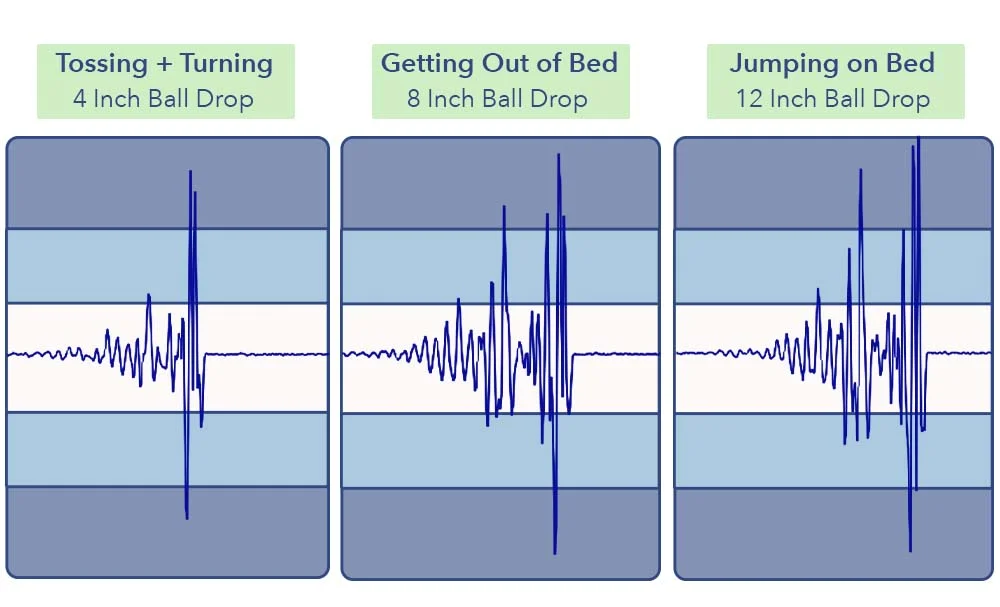

I performed the same series of tests on the Purple mattress. When my colleague moved around on the other side of the bed, I felt little to no movement. When we performed the water test, we again saw scarcely any movement in the glass. When we looked at the seismograph, we saw pretty small disturbance lines. The only concerning spike I saw came from dropping the ball from the tallest height, which represents someone jumping on the bed. Overall, the Purple had good motion isolation, and I think this bed could be an excellent choice for couples, especially if one or both partners tend to toss and turn.
Edge Support
Edge support is just what it sounds like – how supportive the mattress is along its edges. Ideally, the sides will be just as strong as the very center of the mattress. Strong edges can also indicate the overall durability of a mattress, as a mattress with good edge support is also less likely to sag prematurely. They also allow sleepers to spread out and use the entire surface of the mattress, which can make a bed feel larger.
I wasn’t overly impressed with the edge support on the Tuft & Needle, which makes sense considering its lack of innerspring coils to reinforce the edges. When I sat directly on the side of the bed, I noticed a considerable amount of sinkage. I used a yardstick to measure exactly how much the layers collapsed under my weight and found five inches of sinkage, which indicates weaker edge support. I didn’t feel like I was about to fall off the bed, but I’d definitely recommend a mattress with stronger edges to people with mobility issues.
Similarly, I didn’t find great edge support on the Purple mattress. When I sat and lay directly on the edges, I could feel its layers flattening beneath me. I felt relatively stable —and not like I was about to slide off the mattress — but I think people with mobility issues won’t be able to rely on the edges to get in and out of bed.
Pressure Relief
I test pressure relief by rolling a specialized mat onto the surface of the bed and then lying on it in different sleeping positions. The mat is able to sense where pressure is forming and translate the results into a graphic using thermal imaging. Areas displaying blue and green indicate low pressure, and areas displaying yellow and red indicate high pressure.
As you can see on the pressure map, the Tuft & Needle is mostly blue and green, especially when back sleeping. I could feel the foam layers contouring the space at my lumbar region and relieving tension. I do see a bit of pressure forming at the hips and shoulders when side sleeping, so side sleepers might need an even softer bed with more sinkage and body contouring.
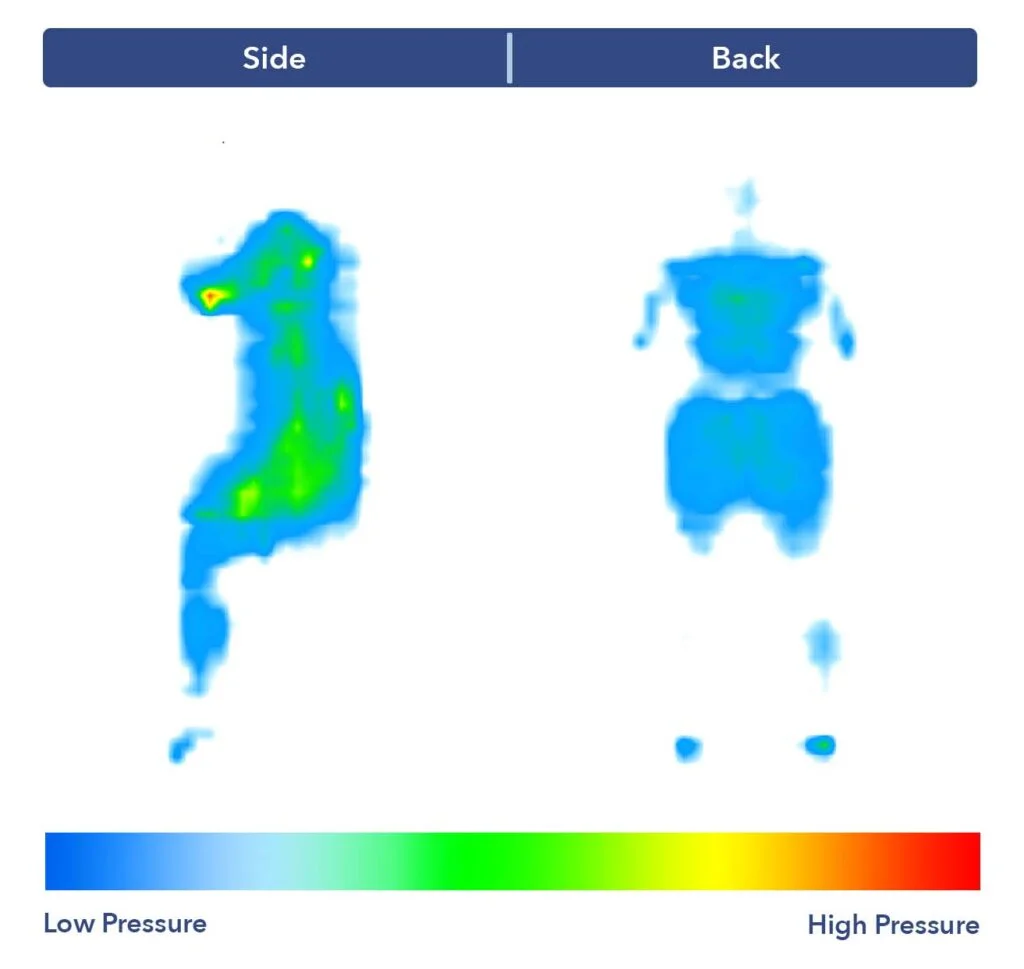
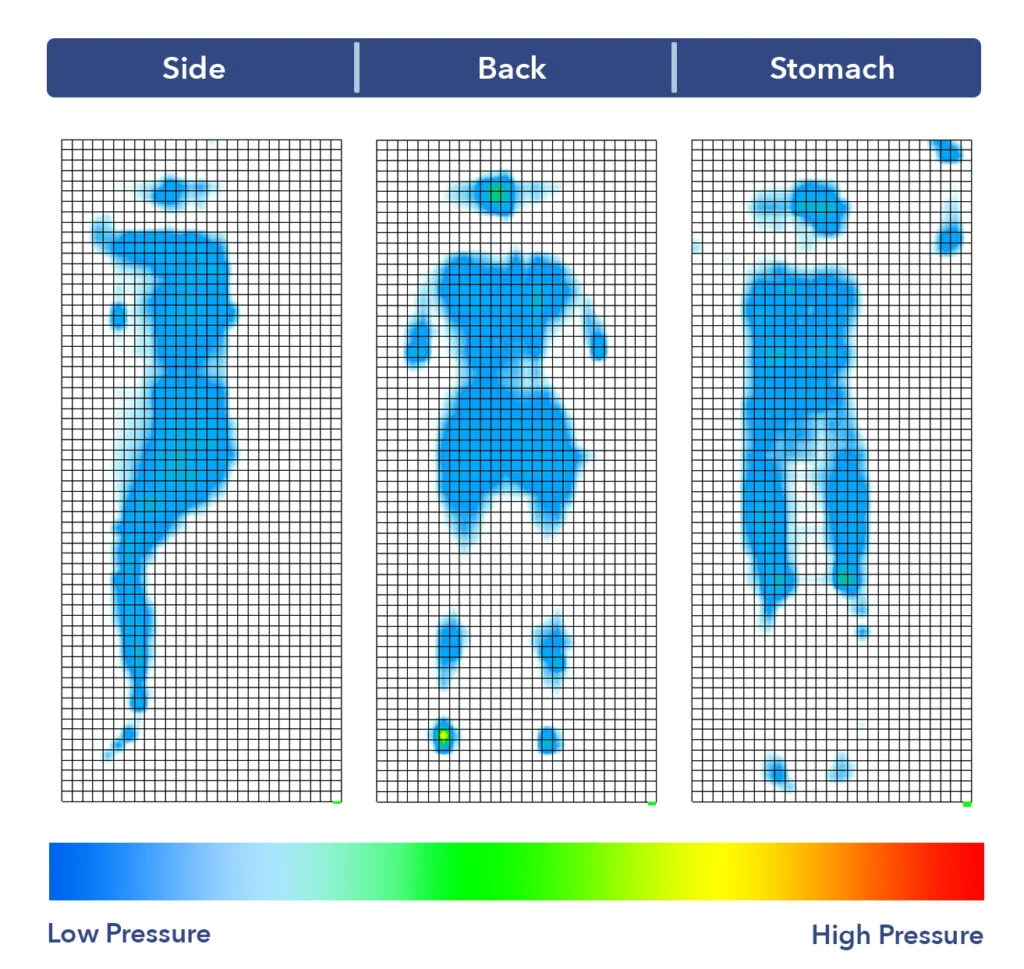
The Purple’s pressure map displays an overwhelming amount of blue. This tells me that the most sensitive pressure points are being cradled, regardless of sleeping position. Although this bed is firmer overall, I was pleased with its ability to contour to my hips and shoulders when side sleeping.
Pain Relief
The results of the pressure map can also indicate whether these mattresses might help reduce pain in specific areas. If there’s low pressure buildup, you’re unlikely to experience new aches from your mattress and might even feel relief from preexisting pain.
I think the Tuft & Needle is an excellent choice for back sleepers experiencing back pain. The tall base layer gives this bed a decent amount of lift, and I could feel it propping my spine into neutral alignment. On the other hand, this bed doesn’t have too much cushioning sinkage, so I wouldn’t recommend it to side sleepers experiencing hip and shoulder pain.
Since I experienced zero pressure buildup when sleeping on the Purple, I think it could be a good pick for any type of sleeper experiencing back, hip, or shoulder pain. The elastic grid layer really puts in the work to cradle the joints at every turn.
Durability
I assess durability by looking at four categories: materials, support, edge support, and warranty. If the mattress is made with high-quality materials, it’s less likely to sag or dip over time. Similarly, a sturdy support system and strong edges can keep a mattress standing tall for many years. Finally, the warranty is a good indicator of the brand’s confidence in its product and how long the mattress should last.
The Tuft & Needle has two foam layers, with the bottom layer of high-density foam making up the support layer. This layer helps support the sleeper and prevent the mattress from sinking or collapsing. The foams inside the bed are all CertiPUR-US certified, so they’re free from toxins and harmful chemicals. These high-quality and long-lasting materials should keep this bed from sagging prematurely. Since the edge support on the bed is just okay, I could see it potentially sagging along the sides after years of use. The Tuft & Needle comes with a 10-year warranty. While the mattress might not last for decades, I think you’ll be able to get plenty of use out of it.
The Purple mattress has a support layer made from high-density foam that gives the bed a strong foundation. The Purple is packed with high-quality materials and some advanced support technology, which is why its price is higher — and why we suspect that the bed won’t fall apart before its natural lifespan. The edges of this bed are slightly weaker than the center, so you might not want to sleep at the far reaches of the mattress. The Purple comes with a 10-year warranty, and this seems like an accurate expiration date based on everything I’ve covered.
Company Policies
Tuft & Needle Policies
- Trial period – 100-night sleep trial
- Shipping – Free shipping minus HI and AK
- Mattress Warranty – 10-year limited warranty
Purple Policies
- Trial Period – 100-night trial
- Shipping – Free shipping
- Mattress Warranty – 10-year warranty
Tuft & Needle Sleepopolis Customer Service Rating
- Stellar: Tuft & Needle has a variety of customer service options listed on their support page, including a FAQ, contact form, and phone number that’s open every day during business hours. I called the number and was able to get in touch with a representative straight away. The representative was friendly and helped answer all of my questions. The representative even offered to stay on the line and help me place an order.
Purple Customer Service Rating
- Great: When I went on the Purple website, the customer service chat function immediately popped up to ask if I had any questions. When I did ask a question, it was answered politely and in detail. Overall, the experience was slightly speedier than on Tuft & Needle’s website, but because the warranty is much shorter at 10 years, I gave the brands the same customer service rating.
Comparing Tuft & Needle vs. Purple Price
When choosing a mattress, price can be a major factor, and it could very well determine which bed you decide to take home. Let’s take a look at how much these beds cost below.
| Size | Tuft & Needle Prices | Purple Prices |
| Twin | $645 | $699 |
| Twin XL | $695 | $899 |
| Full | $795 | $1,099 |
| Queen | $895 | $1,299 |
| King | $1,095 | $1,699 |
| California King | $1,095 | $1,699 |
Nectar vs Purple
Product
Firmness
Score
Other Tuft & Needle & Purple Mattress Comparisons
Wondering how the Tuft & Needle and Purple stack up to some of their competitors from other online mattress companies? Take a look at some of our other comparisons below.
Tuft & Needle vs
- Tuft & Needle vs. Casper
- Tuft & Needle vs. Purple
- Tuft & Needle vs. Puffy
- Tuft & Needle vs. Tempur-Pedic
- Tuft & Needle vs. Casper vs. Leesa vs. Saatva
- Tuft & Needle vs. Yogabed
- Tuft & Needle vs. eLuxurySupply
Purple
- Casper vs. Purple
- Purple vs. Puffy
- Leesa vs. Purple
- Purple vs. Tempur-pedic
- Layla vs. Purple
- DreamCloud vs. Purple
- Nectar vs. Purple
Comparing Other Mattress Models
 | 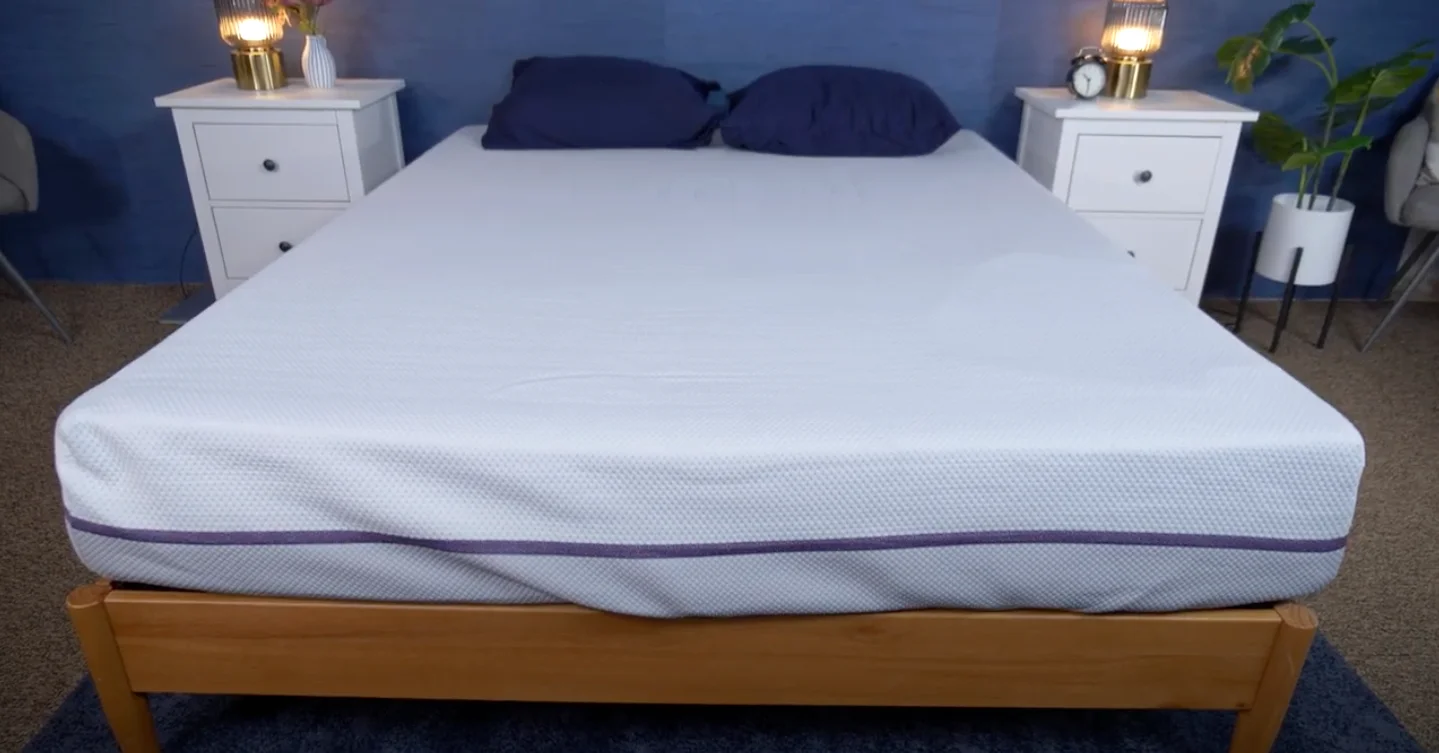 | 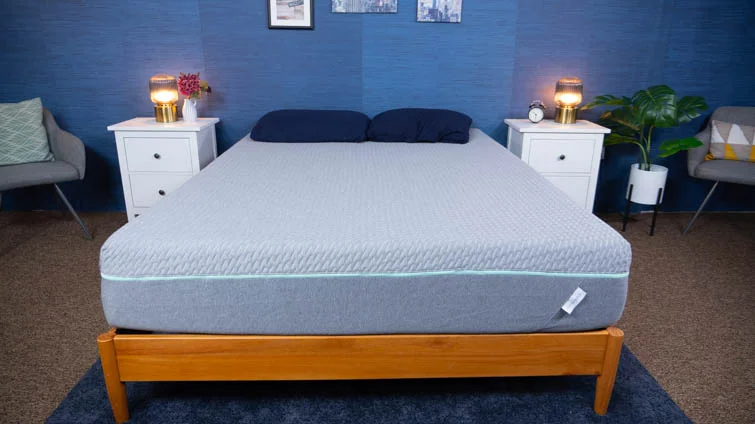 | 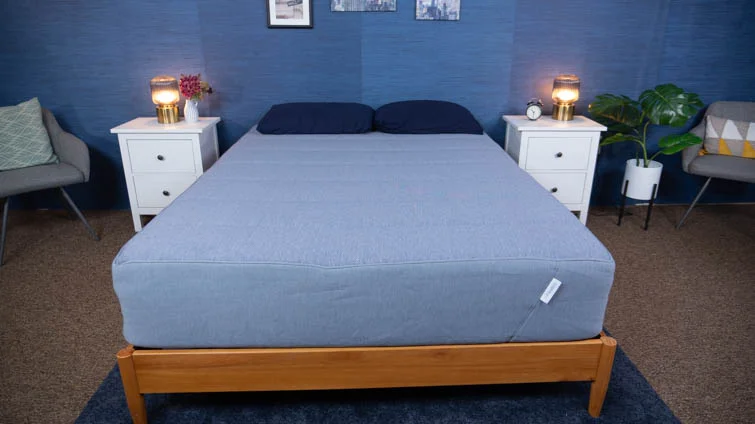 | 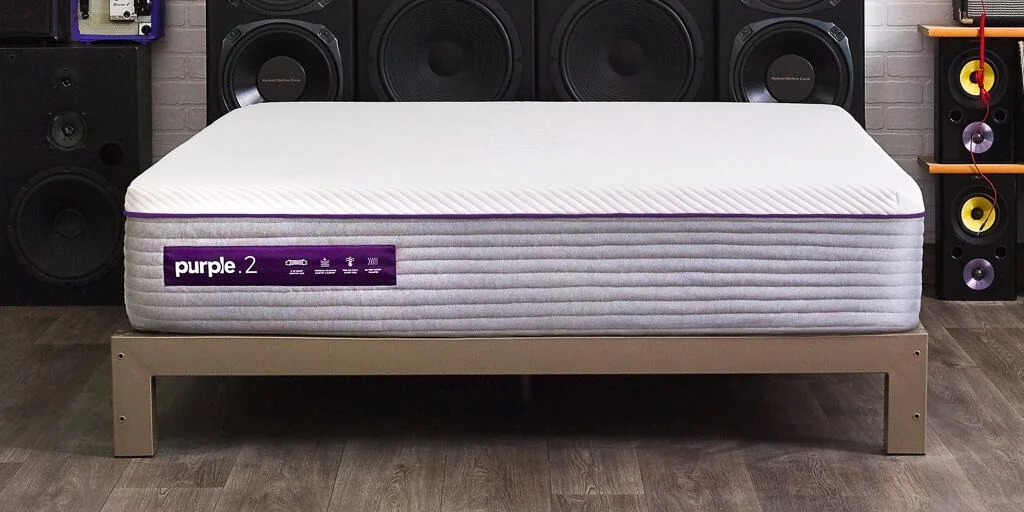 | 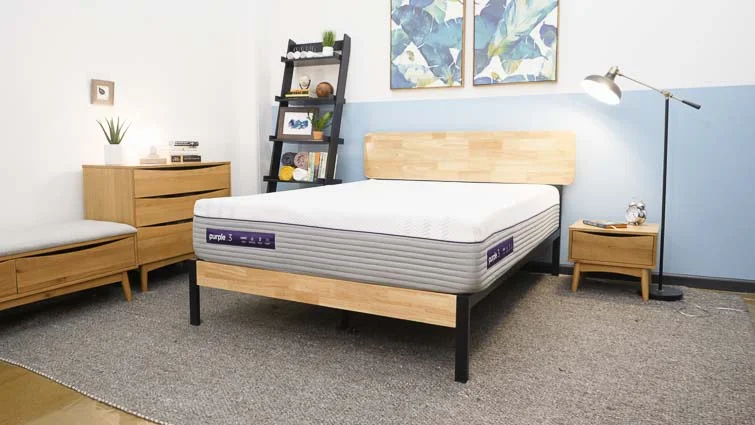 | |
| Tuft & Needle Mattress | Purple Mattress | Tuft & Needle Mint Mattress | Tuft & Needle Hybrid Mattress | Purple Hybrid Mattress | Purple Hybrid Premier Mattress | |
| Rating | ||||||
| Firmness | Firm: 7/10 | Firm: 7/10 | Medium-soft: 6/10 | Medium-soft: 6/10 | Firm: 7/10 | Medium-soft: 6/10 |
| Material | Foam | Hybrid | Foam | Hybrid | Hybrid | Hybrid |
| Cooling | — | — | ||||
| Best For | Back Sleepers | Side Sleepers, Back Sleepers, Stomach Sleepers | Side Sleepers, Back Sleepers, Hot Sleepers | Back Sleepers, Stomach Sleepers, Hot Sleepers | Back Sleepers, Stomach Sleepers, Hot Sleepers, Back Pain | Side Sleepers, Back Sleepers, Hot Sleepers, Hip Pain |
Tuft & Needle vs. Purple Frequently Asked Questions
How do the Tuft & Needle and Purple mattresses ship?
The Tuft & Needle and Purple mattresses both ship for free
What is a sleep trial?
A sleep trial is the amount of time a company allows you to sleep on the mattress before it becomes ineligible for returns. Within the trial period, you can return or exchange the mattress at no additional cost. Most mattress companies will not accept returns until 30 days after delivery so you can give the mattress a fair shot and have time to get used to it.
Are the Tuft & Needle and Purple mattresses good for hot sleepers?
Both mattresses contain cooling features, but I think the Purple is more breathable due to its elastic grid construction that promotes airflow.
Is the Tuft & Needle softer than the Purple?
Yes. The Tuft & Needle is a medium-firm bed that leans slightly softer, while the Purple is a medium-firm bed that leans slightly firmer.
Now let’s cover some of my favorite callouts, as well as a couple of complaints.
As we finish this comparison, I’ll leave you with what I like most about the Purple and point out some of my complaints.

Logan Block
Mattress Reviewer
About Author
Logan is the former content director of Sleepopolis. As content director, he reviewed new mattresses every week and curated the comparisons, best of pages, and video guides on the site. Logan perfected his method by personally testing over 200 different mattresses, so he’s not only able to discern the overall vibe of a specific bed, but to contextualize its feel within the bed-in-a-box market as a whole.
Combination Sleeper






